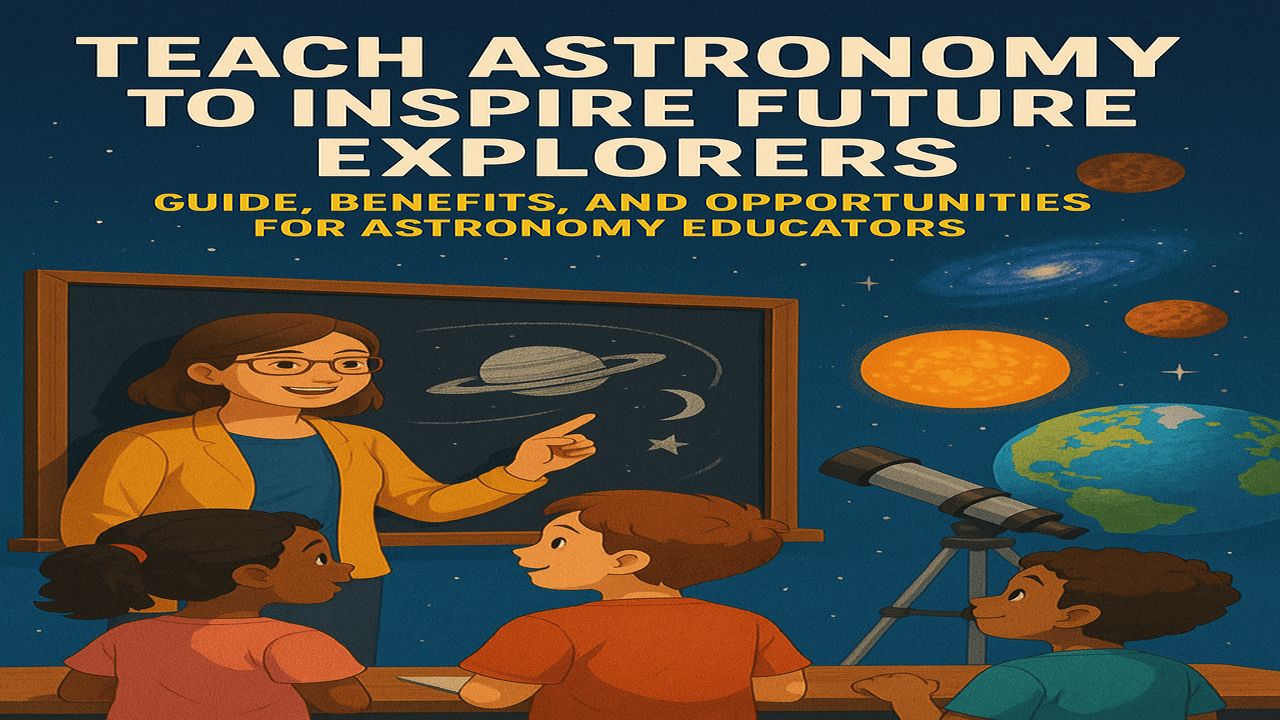Astronomy is not just a science; it’s a gateway to curiosity, discovery, and wonder. Teaching astronomy offers a profound opportunity to engage students, ignite imagination, and inspire future space scientists, engineers, and dreamers. Whether you are an educator, researcher, or a passionate enthusiast, this guide will help you understand how to become a part of this movement and contribute meaningfully to astronomy education.
Why Teaching Astronomy Matters
In an age driven by technology and exploration, astronomy holds a unique power—it helps learners understand their place in the universe while encouraging critical thinking, analytical reasoning, and scientific curiosity. Teaching astronomy cultivates awareness about Earth’s position in the cosmos, the role of physics and mathematics in space, and fosters global scientific literacy.
With telescopes becoming more accessible and astronomy apps simplifying complex concepts, students from all backgrounds can be introduced to the night sky. A teacher can make the difference between a passing interest and a lifelong passion.
 South Africa Weekend Weather September 2025 – Provinces Alerted of Dangerous Rain Conditions
South Africa Weekend Weather September 2025 – Provinces Alerted of Dangerous Rain Conditions
Who Can Teach Astronomy?
You don’t need to be a professional astronomer to teach astronomy. Anyone with a strong interest in the cosmos, basic scientific understanding, and a desire to share knowledge can begin teaching. However, here are some typical profiles:
- School Teachers: Science and physics teachers looking to expand their curriculum.
- College Professors and Researchers: Those already in academic roles who want to run outreach or certificate courses.
- Citizen Scientists & Enthusiasts: Hobbyists and amateur astronomers offering community-based workshops or planetarium sessions.
- Volunteers and NGO Educators: Astronomy clubs and science NGOs often recruit trainers for rural outreach.
How to Get Started
1. Build Core Knowledge
Start with basic astronomy—understand celestial bodies, solar system dynamics, lunar phases, seasons, constellations, and telescope usage. Enroll in online courses offered by NASA, Coursera, or Khan Academy.
2. Get Certified
Look for astronomy educator training or certification programs. Some institutions offer “Astronomy for Educators” modules that help with curriculum design, classroom engagement techniques, and hands-on training.
3. Join a Local Astronomy Club
You’ll gain access to telescopes, group observations, and experienced mentors. These clubs often conduct school outreach and will help you get practical teaching experience.
4. Develop Teaching Material
Design age-appropriate lesson plans, worksheets, and telescope activity sessions. Use visual aids, simulations, and apps like Stellarium or Star Walk to keep students engaged.
5. Start Small
 September 2025 R12,500 Youth Grant – Application Window Open With Step-by-Step Instructions
September 2025 R12,500 Youth Grant – Application Window Open With Step-by-Step Instructions
Begin with local schools, online webinars, or community centers. Conduct night sky observation sessions and interactive storytelling sessions on planets, stars, and myths from different cultures.
Astronomy Teaching Techniques
- Visual Learning: Use charts, star maps, videos, and animations to help visualize space concepts.
- Hands-on Projects: Build solar system models, create sundials, or organize telescope nights.
- Storytelling: Connect astronomy to history, mythology, and real-world events like eclipses or space missions.
- Field Visits: Planetariums, observatories, and science museums provide immersive learning.
Opportunities You Can Explore
🌟 School Outreach Programs
Many educational bodies collaborate with astronomy clubs to bring the universe to the classroom. These programs often need facilitators who can explain complex topics in simple terms.
🌟 Government & NGO Projects
Several science outreach programs (both governmental and private) need astronomy educators, especially for underserved or rural areas.
🌟 Online Teaching
Platforms like YouTube, Udemy, and Instagram offer ways to teach astronomy digitally. Creating engaging, bilingual content is a great way to reach broader audiences.
🌟 Planetarium Guide or Lecturer
If you’re in an urban setting, planetariums often need presenters who can engage school groups and visitors.
Benefits of Teaching Astronomy
- Personal Growth: Deepens your own knowledge while improving public speaking and teaching skills.
- Community Impact: Creates access to science in underprivileged areas and inspires youth.
- Career Expansion: Opens doors to academic, research, and institutional roles.
- Contribution to Science Literacy: Helps build a more scientifically aware generation.
Common Challenges
- Lack of Access to Equipment: Many schools don’t have telescopes. Consider low-cost models or smartphone adapters.
- Limited Curriculum Time: Integrate astronomy with science, geography, or history to fit the syllabus.
- Language Barriers: Use bilingual teaching methods to explain complex ideas in simple, relatable terms.
Teaching astronomy is more than sharing knowledge—it’s about awakening wonder. If you’ve ever looked up at the night sky in awe, you already have what it takes to become an effective astronomy educator. By taking small steps—joining a club, learning from experts, or simply teaching a child to spot Orion—you begin shaping the future of science in your community.
So take that first step. Share your passion. And let the universe be your classroom.




